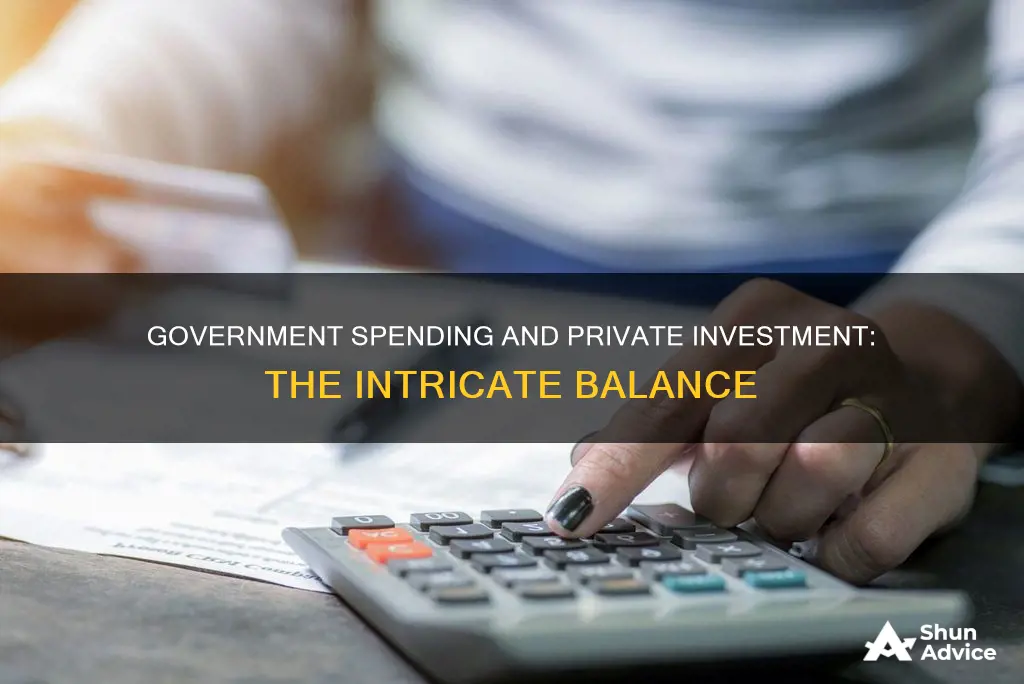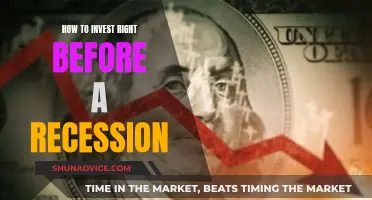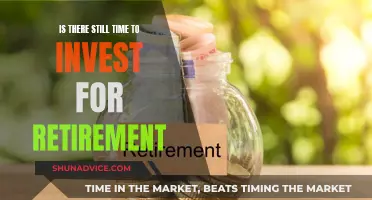
The crowding out effect in economics refers to the phenomenon where increased government involvement in a sector of the market economy affects the remainder of the market, either on the supply or demand side. This can occur when government spending competes with private investment spending, resulting in reduced investment spending by the private sector. This typically happens when governments run budget deficits and borrow money, leading to increased demand for loanable funds and higher interest rates, which discourage private investment. However, the impact of crowding out depends on various factors, including the economic situation and the amount of private saving and foreign investment. While crowding out can slow economic growth and reduce future output, there are circumstances where public investments can crowd in private investments, such as when the economy is not at full capacity or when there are spillover benefits.
| Characteristics | Values |
|---|---|
| Government spending does not crowd out private investment spending when | The economy is below capacity |
| There is a surplus of resources available | |
| The economy is in a recession | |
| There is a lack of borrowers | |
| The government spends on infrastructure | |
| The government spends on human capital | |
| The government spends on technology |
What You'll Learn

Government spending can encourage long-term growth
Infrastructure Development
Public infrastructure spending on roads, bridges, water supply systems, seaports, airports, schools, hospitals, and electricity plants can enhance private investment. For example, new highways can reduce the time and cost of transporting products to market, making it easier for businesses to operate and expand.
Education and Job Training
Government spending on education and job training can increase long-term productivity rates by creating a more skilled and knowledgeable workforce. This, in turn, can lead to higher economic growth and innovation.
Research and Development
Government spending on research and development (R&D) can encourage innovation and the creation of new technologies, which can have a positive impact on economic growth. R&D spending can be directed towards areas such as healthcare, clean energy, or information technology, with potential benefits for both the public and private sectors.
Support for Families and Low-Income Groups
Government spending plans that include support for families and low-income groups, such as childcare support, universal preschool, and refundable tax credits, can increase labour force participation and reduce poverty. This can have a positive impact on economic growth by ensuring that more people are able to contribute to the economy.
Healthcare
Government spending on healthcare can improve access to healthcare services, leading to a healthier workforce and reduced absenteeism due to illness. This can increase productivity and have a positive impact on economic growth.
While government spending can encourage long-term growth, it is important to note that there may also be negative consequences, such as crowding out private investment, increasing budget deficits, and reducing economic efficiency. Therefore, a balance must be struck between public and private sector involvement to ensure that government spending has a net positive effect on long-term growth.
The Looming Threat: Factors Behind the Potential Investment Downfall
You may want to see also

Public investment in physical capital
Physical capital is one of the three main factors of production in economic theory. It consists of tangible, human-made objects that a company buys or invests in and uses to produce goods. Machinery, buildings, office supplies, vehicles, and computers are all examples of physical capital.
However, it is challenging to quantify the exact benefits of government investment in physical capital because governments respond to political incentives in addition to economic ones. When a firm invests in physical capital, it is subject to market discipline, meaning that if it does not receive a positive return on investment, it may lose money or go out of business. On the other hand, governments may make investments in physical capital to spend money in key political districts, which could result in unnecessary roads or office buildings.
If a government finances an investment in public physical capital by increasing taxes or reducing spending in other areas, it may not directly crowd out private investment. However, higher household taxes could indirectly reduce private savings and investment. If a government borrows to finance public physical capital, it may increase the quantity of public physical capital but at the cost of crowding out more beneficial private physical capital investment.
In 2011, the US federal government spent $59.9 billion on transportation, including highways, mass transit, and airports. In 2014, the US federal government budget for transportation was $92 billion.
In summary, public investment in physical capital can have both positive and negative effects on the economy, depending on the specific circumstances and the methods used to finance the investment.
Fundrise: Your Guide to Smart Investing
You may want to see also

Public investment in human capital
Human capital refers to the knowledge, skills, and health that people accumulate throughout their lives, enabling them to become productive members of society. Investing in human capital through nutrition, healthcare, quality education, job opportunities, and skills development is essential for society's overall well-being and long-term economic growth.
The government plays a crucial role in investing in human capital, particularly through the education system, including K-12 and higher education. Education has positive externalities, benefiting both individuals and society as a whole. Educated citizens are more informed voters, and a skilled workforce contributes to higher economic growth rates. Therefore, government spending on education can have a positive impact on the economy without crowding out private investment.
However, it is worth noting that increased spending does not always guarantee improved educational outcomes. For instance, despite significant increases in per-pupil education spending in the US, standardised test scores like the SAT have not shown significant improvements. Nevertheless, the importance of education in the modern world is undeniable, and governments must focus on improving the quality of education and the performance of high school graduates.
In addition to education, governments can invest in human capital through various programs and initiatives. For example, early childhood education programs like Head Start aim to support families with limited educational and financial resources. Additionally, governments can provide support for universities and colleges, making higher education more accessible to a larger proportion of the population.
During crises such as the COVID-19 pandemic, the role of public finance in protecting and investing in human capital becomes even more critical. The pandemic threatened to erase a decade of progress in human capital gains, underscoring the need for decisive investments to prevent permanent damage to future productivity.
To summarise, public investment in human capital through education and various programs can have a significant impact on society's overall well-being and economic growth. However, it is essential to continuously evaluate the effectiveness of such investments and make necessary improvements to ensure positive outcomes.
Baseball Cards: Nostalgia and Profit
You may want to see also

Government borrowing can reduce financial capital for private firms
Government borrowing can reduce the financial capital available for private firms to invest in physical capital. This is known as the "crowding out" effect.
When a government borrows money, it usually does so by issuing debt in the form of treasury securities. These are purchased by investors such as banks, investment funds, businesses, and individuals. The money used to purchase this debt could have otherwise been used for investment by private entities. Therefore, as government borrowing increases, there are fewer resources available for other investments, which can hamper economic activity.
A larger budget deficit will increase the demand for financial capital. The supply of funds in financial markets comes from private saving, government saving, and net investment by foreigners into domestic financial markets. If private saving and net foreign investment remain the same, then there will be less financial capital available for private investment in physical capital. This is what is known as "crowding out".
The "crowding out" effect can be observed in the demand for financial capital. As the government budget deficit increases, the demand curve for financial capital shifts to the right. This shift results in a new equilibrium with a higher interest rate and a higher equilibrium quantity. Higher interest rates tend to reduce private investment in physical capital. For example, a company may decide to forego a new factory that was viable when borrowing rates were lower but is no longer feasible at the higher interest rate.
The degree of "crowding out" depends on various factors. It seems to occur less during recessions since banks have savings to lend but fewer borrowers. The amount of private saving and inflows of foreign financial investment also play a role. For instance, in the mid-1980s, government budget deficits increased substantially without a corresponding drop in private investment.
While government borrowing can reduce financial capital for private firms, it is important to note that government spending can also encourage certain elements of long-term growth. This includes spending on infrastructure, such as roads or water systems, education, and research and development that creates new technology. These types of spending can have positive effects on the economy and potentially offset the negative impact of "crowding out".
Pay Down Mortgage or Invest: Where Should Your Money Go?
You may want to see also

Crowding out may occur due to social welfare
The crowding-out effect is an economic theory that suggests that increased government spending reduces private sector spending. There are three main types of crowding-out effects: economic, social welfare, and infrastructure. This answer will focus on the social welfare aspect of the crowding-out effect.
Social welfare crowding-out occurs when government spending on social programs reduces charitable giving and activity among individuals and businesses. This can happen because people may feel that paying taxes to a government that provides welfare programs negates the purpose of direct giving or volunteering. They may also feel that they have already contributed to a good cause or that giving to charity is less impactful. As a result, public sector expenditures for social welfare can reduce private sector giving for social welfare, offsetting the government's spending on these causes.
The evidence on the existence of the social welfare crowding-out effect is mixed. Some studies find a small effect, while others find no impact or even the opposite—that government spending on social welfare increases charitable giving.
In the context of health economics, "crowding out" can refer to the phenomenon where the expansion of public health insurance programs, such as Medicaid, causes those with private insurance to switch to the public option. This can lead to a reduction in private coverage as private health insurance companies are left with fewer customers and a smaller risk pool, potentially raising premiums.
In addition, government spending on social welfare can indirectly reduce discretionary income for individuals and businesses, as taxes may be raised to fund these programs. This can, in turn, reduce charitable contributions and other forms of private sector spending.
Overall, the social welfare crowding-out effect highlights the complex interplay between government spending, private sector activity, and social welfare initiatives. While government spending on social programs can have positive impacts, it is important to consider the potential for crowding out private sector spending and charitable giving in these areas.
Retirement Investing: A Wise Move or Misguided Adventure?
You may want to see also
Frequently asked questions
The crowding out effect is an economic theory that suggests that increased government spending can ultimately decrease private sector spending. This is due to the higher cost of loans and reduced income that can result when the government increases taxes or borrows by selling treasury securities to obtain more revenue for its own spending.
When governments borrow money, they compete with everyone else in the economy who wants to borrow from the limited amount of savings available. This competition causes the real interest rate to increase, which in turn decreases private investment.
The crowding out effect occurs when the economy is near full employment or full capacity. In this case, there is likely to be more private investment, and therefore more potential for crowding out.
The crowding out effect can slow economic activity and growth as higher taxes reduce spendable income, and increased government borrowing raises borrowing costs and reduces private sector demand for loans.







